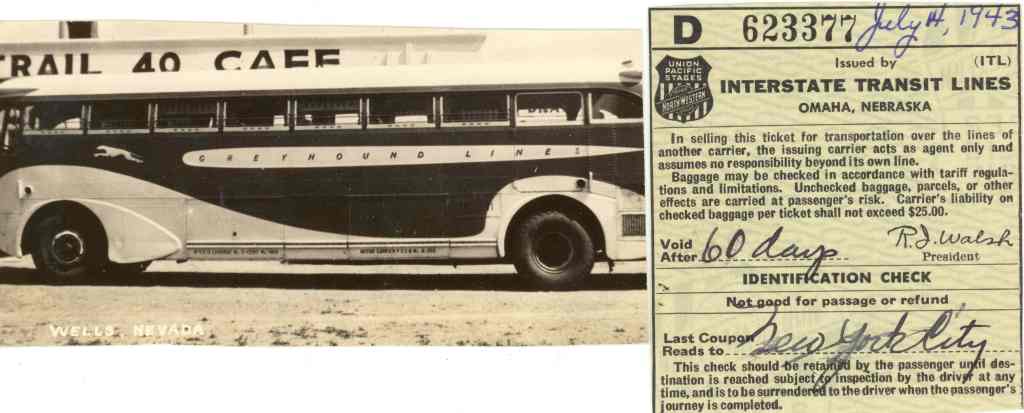
The older I get, the more I appreciate – and miss – my mother.
Born in 1919, Gladys Olive McLaughlin Henrickson was a woman of her times… and our relationship was somewhat a victim of The Generation Gap that widened so drastically in the 1960s. Although we weren’t tremendously close, we always maintained communication and a sense of family. She (and my dad) were always very supportive of me, in spite of my being a hippie musician who took off cross-country living in a van for six months (way before the days of cell phones). I can only imagine how difficult that was for them.

It didn’t look like I’d ever marry, and when I finally did at age 33, it was to a New Age minister who’d been divorced twice previously. My life choices were a lot for them to accept, but they came through with flying colors, and as a result, we had a relationship that survived our differences. This lesson of acceptance and faithful patience served me well when my own children reached their teens and twenties.

Cliff, Lois, Gladys, Jim (C.J.)
Gladys served many roles in her life – wife, mother, grandmother, secretary, choir singer, gardener, friend – and did them all with a level of excellence and commitment that is all too rare. As I hear about other people’s upbringings, I am so grateful for the loving support, stability, and plain old sanity that I enjoyed as a child. Nobody in our house drank too much, or gambled, or smoked, or abused anyone else. People were treated with politeness and basic respect. The bills were always paid because Dad and Mom showed up every day, on time and prepared to do their not-particularly-exciting jobs. They didn’t have huge expectations out of life, merely aspiring to a quiet, useful, middle class life. They appreciated and took good care of whatever they did have.

As a wife, Gladys kept the house clean and neat, tended her vegetable and flower gardens (often the pride of the neighborhood), and put supper on the table every weeknight at 5:15. From every paycheck, she put money in a little book of envelopes for each category of household spending, using the budgeted amount to live within our means, shopping the sales and clipping coupons.
When I entered junior high, she went back to work as a secretary, part-time so she could be home when I got home from school, and earning enough to eat out more often, save for college and retirement, and spend a little more on our annual vacation. She ended up working as the personal secretary to the president of a small company, in part because of her fastidious attention to detail – and his delight at her perfect spelling. She was smart, reliable, and friendly, well-liked by all her co-workers.

Gladys didn’t particularly like to cook, but she cooked every day, usually from her well-worn Betty Crocker Cookbook. Nothing fancy, just simple fare in an era when lasagna was an exotic dish. We had a full Sunday dinner after church (put the chicken in the oven on low and don’t linger at church), then hot dogs & beans for supper. Every Friday she’d bake 2 pies and a batch of cookies. One pie was for friends that they’d invite over on Saturday, to chat or play cards. Every birthday had a homemade cake and some kind of party with relatives and/or friends. Every holiday had decorations and cookies and celebrations. Cookouts for the extended family were in our backyard on Memorial Day, Fourth of July, and Labor Day… and often in between. She was known for being able to whip up a meal from the pantry & freezer whenever somebody hungry showed up. And her homemade baked beans were legendary at the congregational church potlucks. (Her secret: “When I add the brown sugar, I close my eyes and pour in more than I should.”)
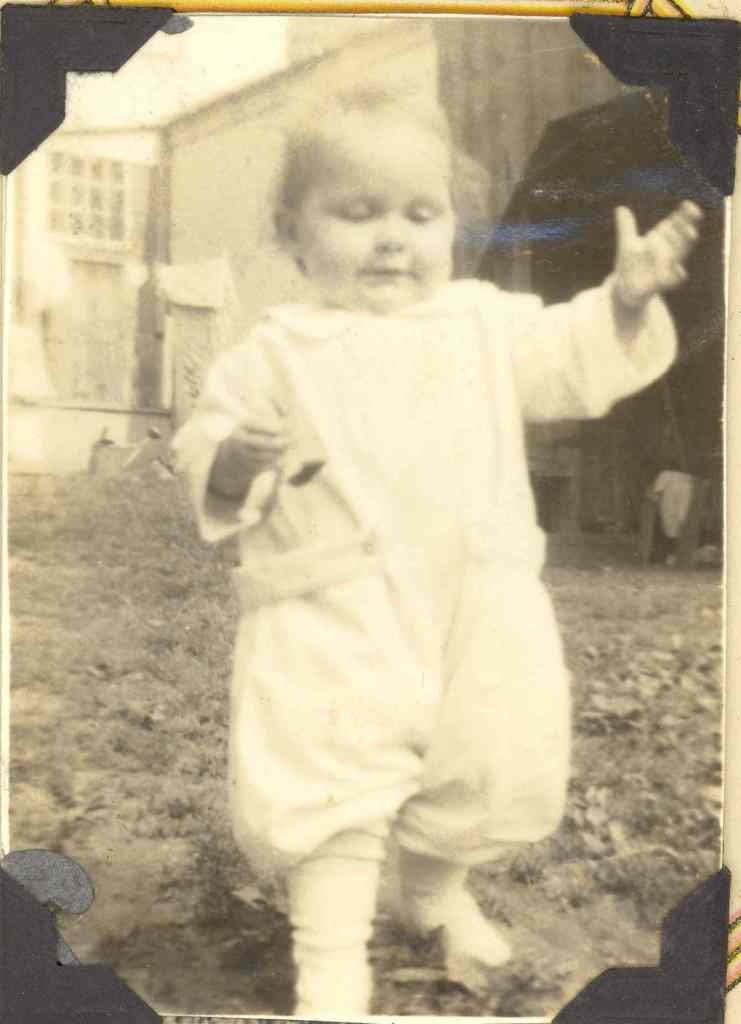
She was musical. She learned to play the piano at school, but they didn’t have a piano at home, so she practiced on a piece of wood that had the piano keys painted on it. She probably wanted to accompany her father’s singing. She mostly played hymns, always from sheet music. She was my first piano teacher when I was 5. She sat and played the piano almost every day of her life. And she always sang in the choir at whatever church she attended. My first introduction to choral music was sitting on the piano bench with her as she directed the church’s Junior Choir (I was too young to be in it.) Late in life, she sang with a group of a dozen women called the “Do-Re-Mommies” who gave small concerts. She was thrilled to appear on a local TV show with them. She sang alto – the harmony, never a solo – and sang duets with me a couple times. The family often gathered around the piano to sing together. Mom and Dad attended every concert within 300 miles if I was singing in it, and I deeply appreciate the support they demonstrated.
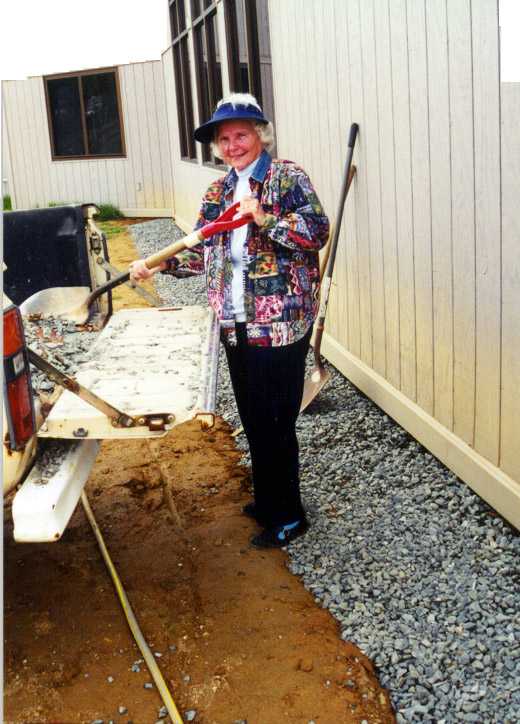
Gladys went to the local congregational church every week without fail, but was not particularly interested in theology. She said it was an hour of peace and quiet in her week, and she loved the music. Sure, the sermon helped her continue to be a good person, but I think she mostly liked the circle of friends and the friendly competition over coffee hour snacks. She always got involved and did her part in taking on the volunteer jobs. When she moved south, she did the same at my church, becoming a Volunteer of the Year. Here’s a photo of her shoveling gravel at our new church – at age 82!
She was also an artist. She did all the artwork – lovely drawings – for her high school yearbook, but never pursued any art training. It just wasn’t an option for her in 1936. But she used her artistic talents to do various crafts and arrange artificial flowers. She often had a glue gun or knitting needles or a crochet hook in her hands. A large portion of her church’s annual expenses were paid by a small group of women who met weekly to make Christmas ornaments to sell at an annual Bazaar.
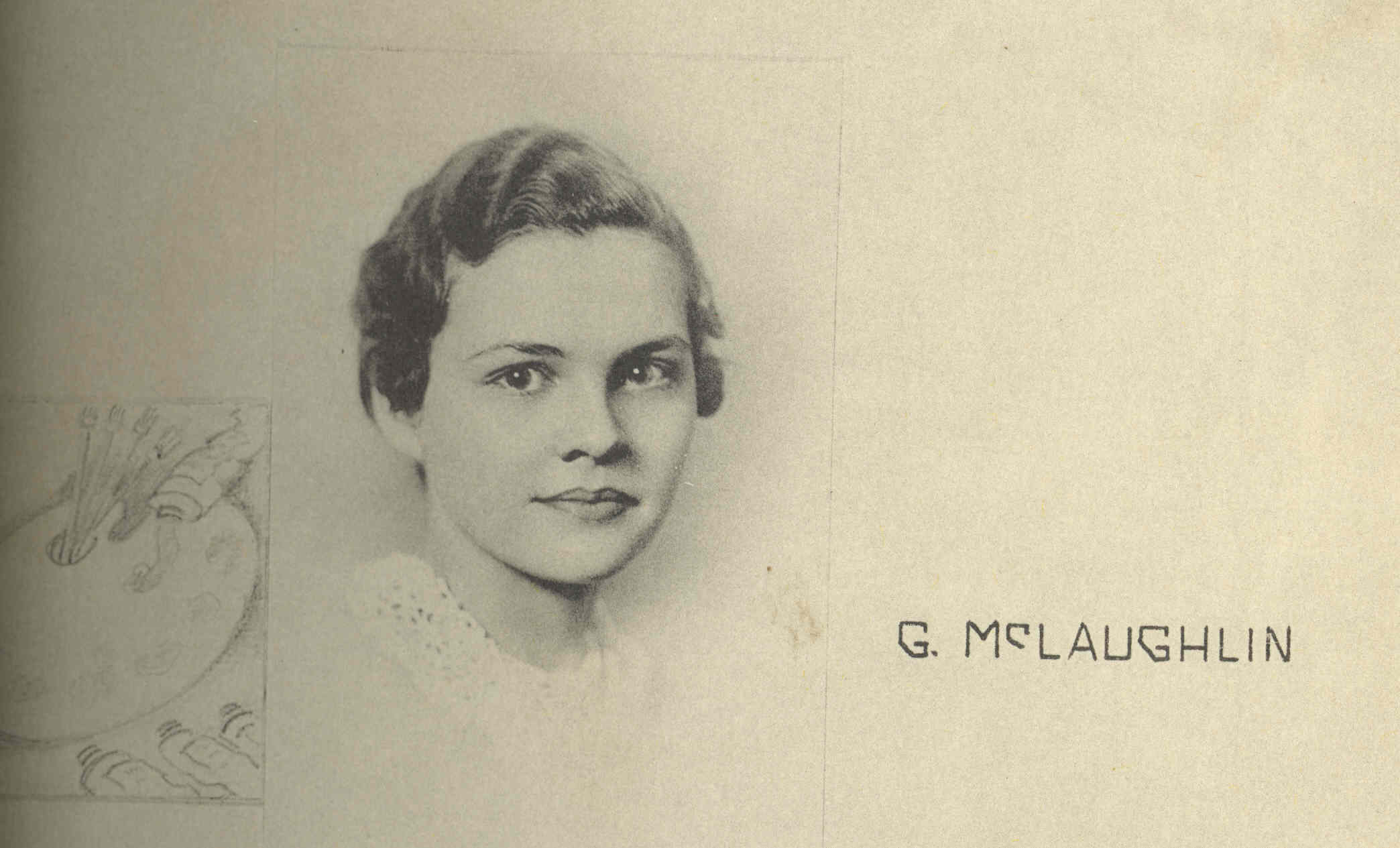
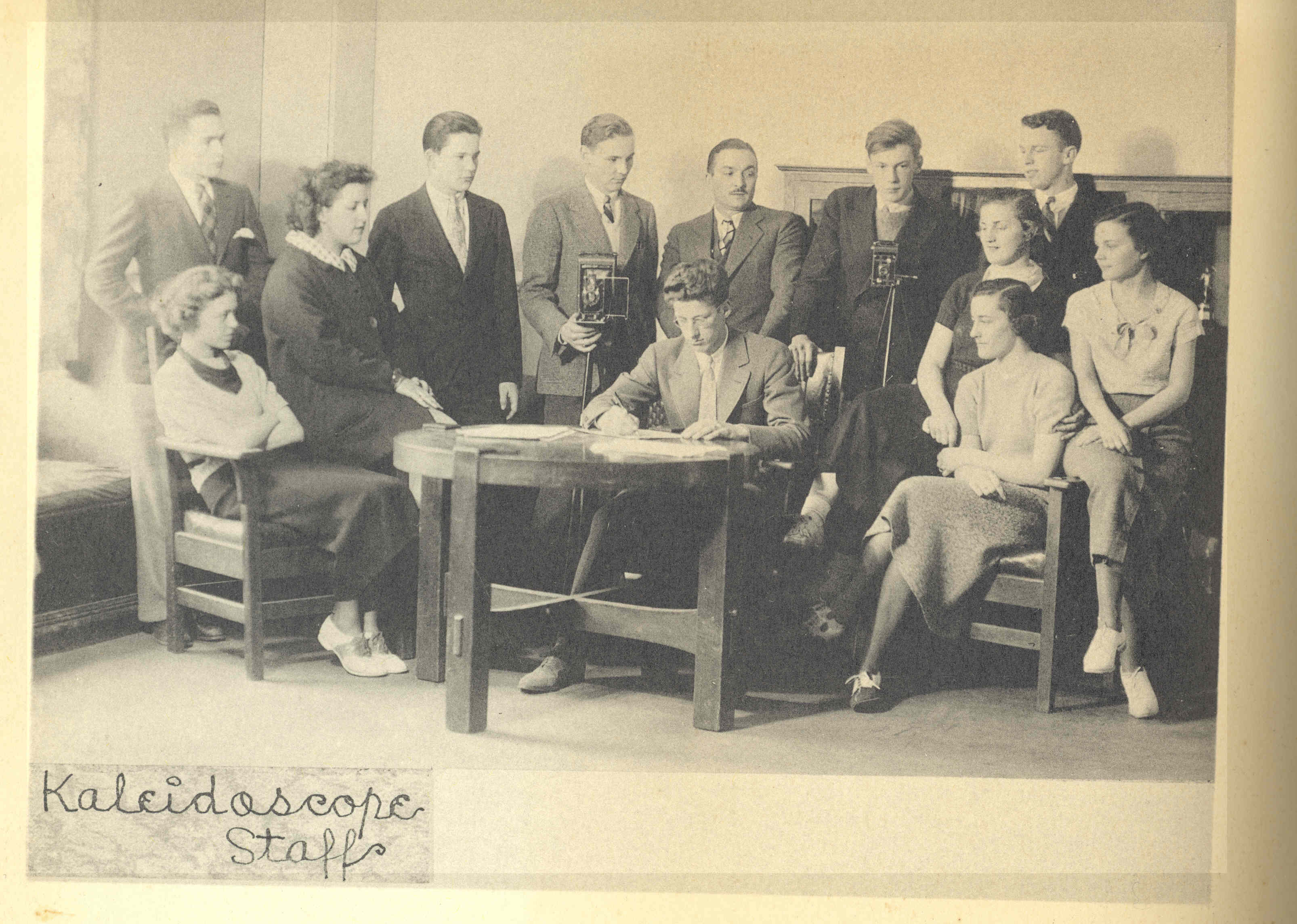

As a child she was exceptionally quiet and shy, hardly saying a word. But in later life, she made up for lost time – she was very talkative, knew all her neighbors, and struck up conversations with perfect strangers.


Gladys and Cliff met while ice skating on a local pond. She fell, he picked her up, and they were married on New Year’s Day, 1941, in the West Suffield (CT) Congregational Church. The bride carried gardenias in her bouquet, and the reception was in the fellowship hall. The war was on, but Dad worked in a defense industry that made parts for aircraft, so he wasn’t drafted. Their son arrived in December 1941.
In 1943, they left the baby with grandma and had an adventure – a cross-country trip, with a ration book for gas and tires. Cliff had a brother in California he wanted to visit, so they delivered a car to the west coast and rode a bus back. The first flat tire came before they got through New York state.
In the spring of 1949, they went to Washington D.C. to see the cherry blossoms. I was the result. The fur coat was made of muskrat pelts. Mom gave it to me to wear in high school. I didn’t feel bad about wearing that fur – after all, the muskrats would have died of old age decades before.


Gladys knew the name of every flower in her garden. The bloom started with crocus peeking through the snow, then daffodils and tulips, iris and dutch iris, azaleas and dogwood. Summer brought coral bells, yarrow, primrose, bleeding heart, columbine, daylilies, hen & chickens, sedum, roses, hosta, lots of annuals, and her namesake, gladiolus. She always added a couple bags of fresh dirt to the flower bed every spring to improve the soil. By the mailbox she had a rock garden of shade-loving plants tucked artfully among the large rocks. She didn’t wear old clothes or use garden gloves. I never figured out how she stayed so miraculously clean!
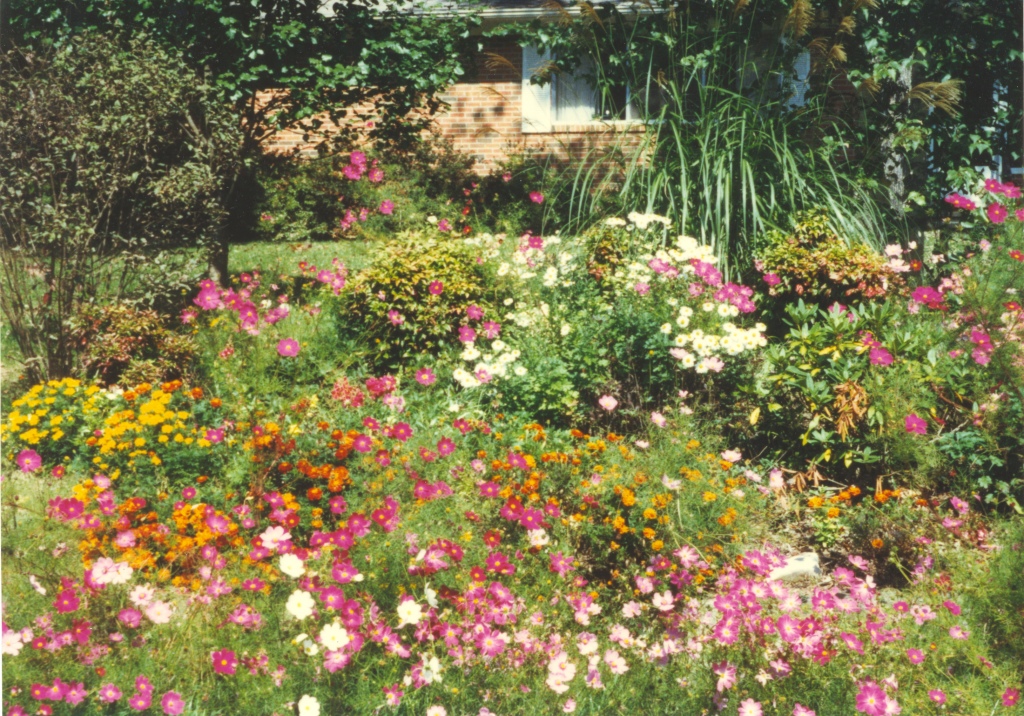
In the backyard she planted lots of tomatoes, bell peppers, and green and yellow beans for us to enjoy. She did NOT can anything – she did too much of that in her youth when that was the only way to have vegetables in the winter. But she’d go get a bushel basket of corn that we’d blanch, put into ice, then cut off the cobs to put into the freezer. Some of it made it to Thanksgiving dinner. We’d usually make a visit to a pick-your-own strawberry patch and later to a blueberry patch. After strawberry shortcakes and blueberry pies, some of that bounty might make it to the freezer.

As Depression-era children, my parents were frugal, especially Dad. Success was a full pantry, a good used car, and a paid-off mortgage some day. You repaired instead of replaced, you bought on sale, and you didn’t throw away things that could be useful. I remember Mom telling me that she had to convince Dad that I should get a new doll for Christmas. He didn’t think I needed more than one. And she believed that you should spend as much on vacation as you would have earned in those two weeks. We vacationed in a 9 x 9 umbrella tent, but we went every year without fail and we loved our times at Lake George NY. And in various years, we went to Detroit, to Prince Edward Island (Canada), to Florida, and to the Grand Canyon and Disneyland on a cross-country trip in 1958. Although she saved for the future, Gladys made sure to enjoy the present.
Gladys became the quintessential grandma. She was fortunate that her 4 grandchildren arrived over a wide span of time. When each boy was 10 years old and started out “out-grow” grandma, another baby came along, until the last: a girl just 5 years after her brother and born on Glady’s 74th birthday. With the grandkids, she played board games, did crafts, sang, played catch, went mini-golfing, introduced them to fast food french fries, made cookies, took them berry-picking, had us over for Sunday dinners. My kids got to do a sleep-over at Grandma’s on Saturday nights, with breakfast at Hardee’s and arrival at church for the 11:00 service, so they wouldn’t have to get there at 8:30 with me. We often went on vacations together, and Gladys was right with us in the ocean or the pool, pushing a stroller along the winding paths at Hilton Head, riding a steam train from Dillsboro, or hiking to Pearson’s Falls. She was fun-loving and had an adventurous spirit.



Although she was not “athletic,” she was fit and healthy, and lived to age 90 with only a few difficulties. She watched her diet – with exceptions and in moderation: fries, potato chips, ice cream, and Hershey bars. She was always gardening, and she walked a lot, usually at a fast pace! Only 5’2″ tall, she kept those short legs moving! And when old age finally caught up to her, she walked around the neighborhood with a walker.
My mother gave me a strong legacy: her example of womanhood. I always felt that women were capable and powerful… because she was. She was feminine but strong; she had opinions, but did not need to be confrontational. She was smart and talented, but didn’t feel a need to hide that in an era when many women felt they had to. By her example as well as her support, I learned to trust in my own abilities, and later to support my children in their endeavors. We didn’t have to agree on everything to love each other.
Mom, you were one in a million, and I thank you for it.
